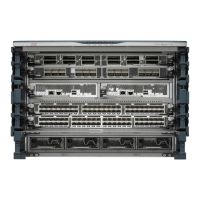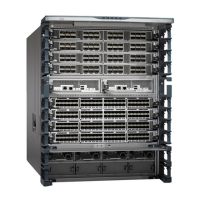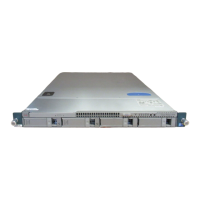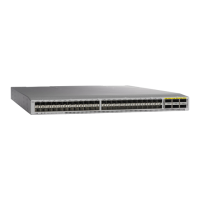Send document comments to nexus7k-docfeedback@cisco.com.
15-12
Cisco Nexus 7000 Series NX-OS Unicast Routing Configuration Guide, Release 4.x
OL-20002-02
Chapter 15 Managing the Unicast RIB and FIB
Managing the Unicast RIB and FIB
DETAILED STEPS
Estimating Memory Requirements for Routes
You can estimate the memory that a number of routes and next-hop addresses will use.
To estimate the memory requirements for routes, use the following command in any mode:
Command Purpose
Step 1
show hardware forwarding dynamic-allocation status
Example:
switch# show hardware forwarding dynamic-allocation status
Num 288 bit blocks : 1 (Same as default setting)
Num 144 bit blocks : 7 (Different from default setting)
Num 72 bit blocks : 9 (Different from default setting))
Displays information about the
TCAM allocation.
Step 2
show hardware capacity | begin TCAM
Example:
switch# show hardware capacity | begin TCAM
Note: IPv4 Multicast/IPv6 Unicast entries share one FIB TCAM entry
pool
Module 7 usage:
Route Type Used %Used Free %Free Total
(Log/Phys) (Log/Phys) (Log/Phys)
-------------------------------------------------------------------
------
IPv4 Unicast 5/5 0 57339/57339 99 57344/57344
IPv4 Multicast: 4/8 0 16380/32760 99 16384/32768
IPv6 Unicast: 6/12 0 16378/32756 99 16384/32768
IPv6 Multicast: 5/20 0 2043/8172 99 2048/8192
Displays information about the
number of routes in each TCAM
section.
Step 3
Reduce route updates from neighbor routers until the TCAM usage is
below the default allocation.
You must prevent neighbors from
sending more route updates than the
TCAM can handle based on the
default allocation. The TCAM entries
will time out and reduce the TCAM
load to below the default allocation.
Step 4
hardware forwarding dynamic-allocation disable
Example:
switch# hardware forwarding dynamic-allocation disable
Disables dynamic TCAM allocation.
Default is enabled.
Command Purpose
show routing memory estimate routes
num-routes next-hops num-nexthops
Example:
switch# show routing memory estimate
routes 5000 next-hops 16
Displays the memory requirements for routes. The
num-routes range is from 1000 to 112000. The
num-nexthops range is from 1 to 16.
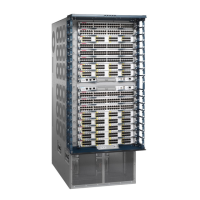
